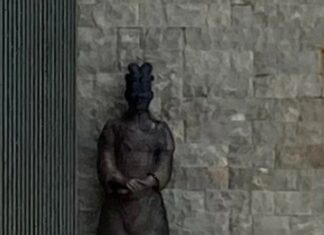Now may be a good opportunity to reflect upon a story of Australia’s discovery that is not so well known.
In 1977, Souvenir Press (Australia) published a book called ‘The Secret Discovery of Australia’, by Kenneth Gordon McIntyre.
This book details how, in 1522, the Portuguese governor of Macau, on the coast of China, commissioned Admiral Christavao da Mendonca to take command of three caravels and sail south “to search the isles of gold for Majellan”.
Previously, another Portuguese explorer, Pierro de Quiros, had hypothesized that a great southern continent must surely exist.
He never sighted this continent; but he named it “The Great South Land of the Holy Spirit”.
There is a copy of a map which shows that the expedition led by Admiral Christavao da Mendonca did indeed come upon the eastern coastline of this great south land.
For when this map is projected properly, it does show the eastern coastline of Australia, as far as the present-day town of Warrnambool in Victoria.
To this day, the people of Warrnambool talk about what they call the “mahogany ship”, the remains of which they claim is buried in the sandhills near the town. This is a particularly treacherous coastline in stormy weather.
A sixteenth-century sailing ship could well have been driven ashore there.
Then, in 1606, Dutch explorer Willem Jantzen and his party made landfall on the northern coastline of Western Australia.
Over subsequent years, other Dutch explorers would explore much of Australia’s coastline, and eventually come upon what they called ‘Van Diemen’s Land’: present-day Tasmania.
They also sailed further eastward across the Pacific Ocean, and came upon the two islands of what they called ‘Neu Zeeland’.
The Dutch knew they had come upon a huge southern continent.
They named it ‘New Holland’.
And this name stuck even after Captain James Cook sailed south in 1770 to observe the transit of Venus across the face of the sun.
Cook visited the Portuguese port of Sao Paulo in Brazil.
Is it possible that he was shown a centuries-old map the Portuguese themselves had made of this great southern continent?
Is this how he knew of the existence of the Endeavour River, and was able to nurse his ship there after it had been holed on the Great Barrier Reef?
Cook, of course, claimed the eastern part of this continent he had come upon for England.
He named it ‘New South Wales’.
An online search has allegedly been made for the letter that King George III would surely have written to Captain Arthur Phillip, commissioning him to establish a penal settlement at the place Cook had called Port Jackson on the coast of New South Wales.
But the people who have claimed to have made this online search also claim that this letter could not be found.
This letter, written by George III commissioning Arthur Phillip to found this penal colony at Port Jackson would be, in effect, the founding document of the nation of Australia.
One would hope, then, that a further search would reveal its existence.
– John Hermann
Gympie






